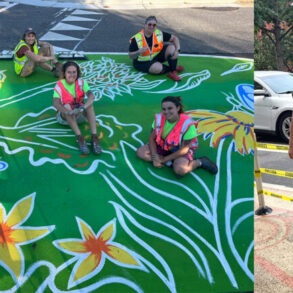
EXCLUSIVE
Pune: Once regarded as a childhood pastime, the intricate Japanese art of folding paper into decorative shapes and figures, also known as origami, is no longer associated only with children. The timeless craft, today, is increasingly making its way into the fields of art, architecture, mathematics, and engineering, inspiring a new wave of creativity and problem-solving across various disciplines.
Origami, as a technique, involves the transformation of a single sheet of paper, through a series of precise folds, into a variety of forms. From simple designs like cranes and boats to complex geometric structures, it serves as a bridge between art and science.
Jaipur-based Aditi Anuj has been practising origami for over a decade. She runs a studio that specialises in using the art commercially. “We have worked on many origami projects like sculptures, wall art, installations, and event décor, among others. We have also designed handmade origami lamps and chandeliers,” said Anuj, who runs her studio, Adigami, with Neelam Nagrani.
Origami is still a very niche art form. There are a few people who appreciate the effort that goes into it and are willing to pay for it. Internationally, origami artists have collaborated with brands to develop unique, geometric modular furniture and solar panels for satellites.
“There are many people entering the field, but only a few original artists. Origami requires a lot of understanding. It is based on hardcore geometry and people need to learn more than just pleats,” said Mumbai-based Himanshu Agrawal who has been practising origami for the last three decades. He uses handmade paper or upcycled paper for his models and has seen the industry and art evolve.
Agrawal has worked with over 150 clients in India and overseas through his Orukami Paper Art Studio.
Some origami artists, for complex structures and large installations, use software to visualise the number of creases and paper required.
They use locally available paper for temporary models but shift to laminated sheets, mouldable polypropylene, and Tyvek, which is made from high-density spun-bound polyethylene fibres, for a longer shelf-life of origami models.
“As many as 80% of the people who engage with us are adults. While most of them are learning the art as a hobby, some have taken it forward for use in mathematical and engineering applications,” said Hrushikesh Sabnis, who is part of Origami Mitra community in Pune.
The community has been around for the last 25 years, and has been encouraging the art via workshops and exhibitions.
“In India, commercial applications are few, but there are some applications of origami in advertisements and corporate events,” Sabnis said.
Bangalore-based Nikhil Suryanarayana, who has been practising origami for the last 16 years, said that he has mostly used the art commercially in advertising and product shoots. “Many of these have been around themes that include nature. I have also created props for shoots and done installations for ceiling décor, etc. Origami is still picking up in India. One can make a decent amount of money with the right portfolio and right clients,” he said.
Manjushree Dhume, an IITian who has worked for over 18 years in different fields like engineering, software, and training, has been using origami to teach children Maths concepts. “Origami is not just used to teach shapes, but I also teach geometry and number concepts via the art form. I teach fractions, ratio, and percentage concepts to students from class one to class eight. It gives children a perspective of the maths concept,” said Manjushree, who is the founder of Learn Quest and is based in Aundh. She has taught children in twelve schools in Pune so far.
This post was originally published on this site be sure to check out more of their content







